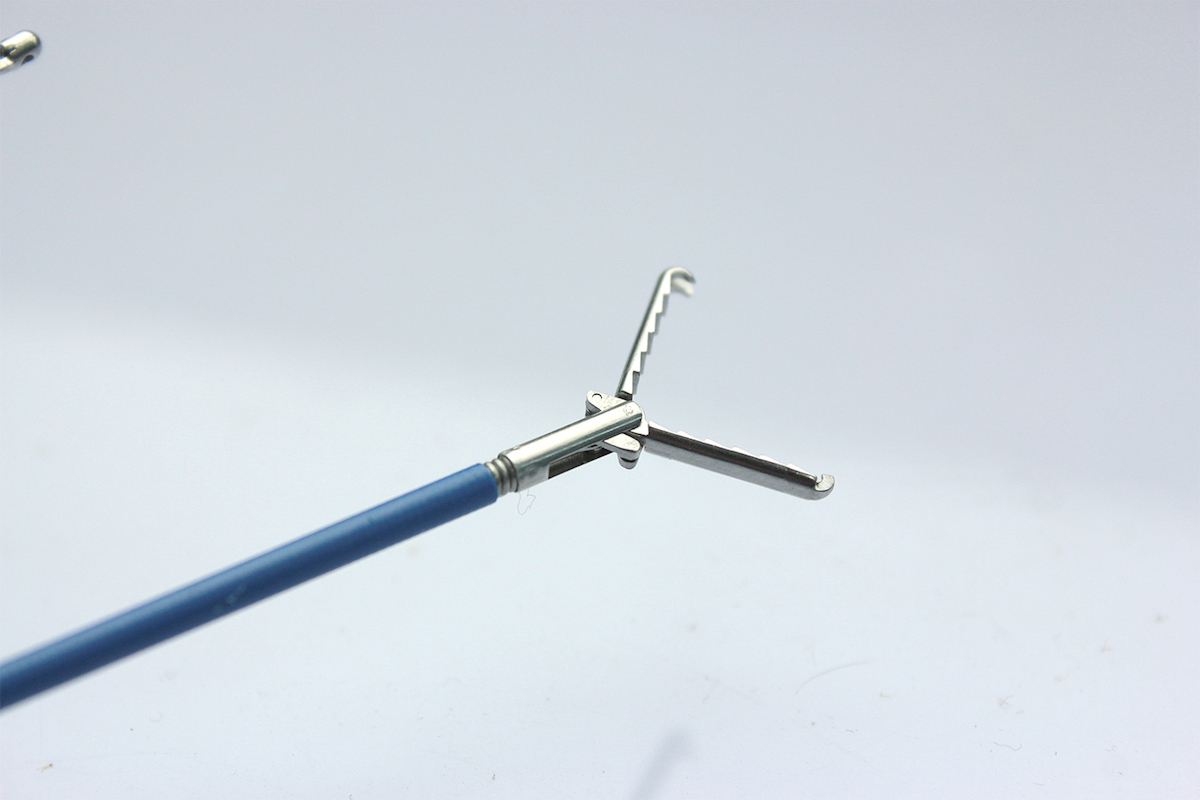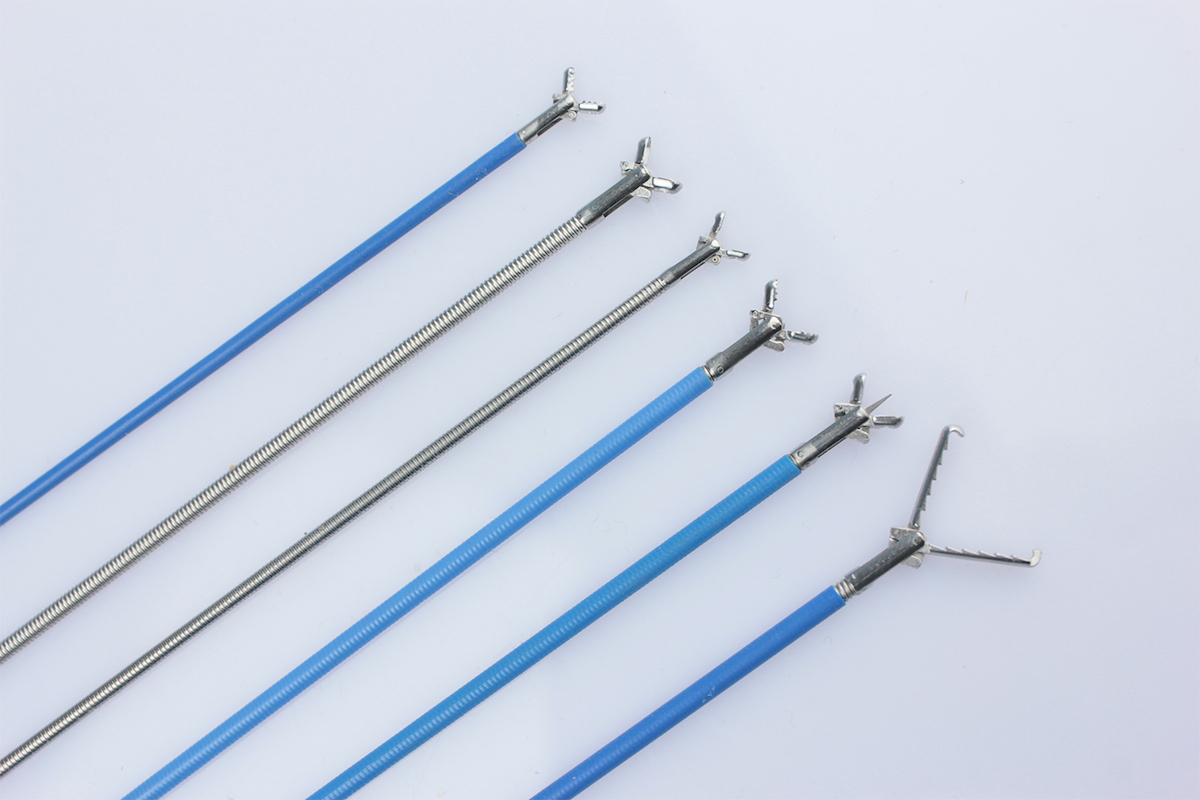The importance of biopsy forceps for medical diagnosis

KWT Medicals News • June 2, 2019
ABiopsy is the most common GI procedure it is also necessary component to GI endoscopy as an endoscopists who perform a good number of endoscopy and biopsies and has been involved in biopsy forceps for more than 20 years. I really want 5C forceps always to take adequate specimens always to work have no issues with cross-contamination so basically, I don’t have to think about it.
I know also that because I do a good amount of ordering for this GI lab my purchasing agent also tells me that they want them inexpensive I would prefer them to be cost-effective that to work very well at a very reasonable price. But if you can increase the tissue size on each biopsy now you’ve doubled your yield the same number of passes.
So the interesting thing I’m doctor street commander II directors of endoscopic ultrasound at Rush University Medical Center an assistant professor of medicine and the section of gastroenterology and nutrition the KWT Medicals forceps has been a nice surprise and that we are able to identify submucosal lesions and in the same initial procedure obtained a biopsy deep enough not only to get diagnosis but to do any special sting that the pathologist needs to do to director our management.
The pathologist needs to do to director our management the heart biopsies create a card artifact and I’m serum Jacare. I am the director of laboratory services at Rush University Medical Center in Chicago I provide consultation pathology services for gastroenterology and liver specimens to all our gastroenterologists and hepatologists.
I’ve been doing this for 14 years and I evaluate over 5,000 specimens a year.
Ideal Biopsy Specimen
Since biopsy is so important in endoscopy tissue really is the issue and the really the ideal biopsy specimen is one that has a large surface area adequate depth is reliable and representative of the tissue that you’re sampling and the specimens are completely interpretable.
What is important to a pathologist in a biopsy sample is the quality of the biopsy and also the clinical information that comes with the biopsy so that the pathologist is able to evaluate the tissue in the clinical context another advantage that the pathologists may have is the larger of the biopsy the easier it is to orient and in surveillance biopsies.
It is very important that the biopsy piece is oriented well because one crucial thing that we look for is dysplasia and regenerative changes are best differentiated from dysplasia by lack of surface maturation.
This is a large capacity the forceps closed for me please Okay you can see there’s minimal or no bleeding with that biopsy forceps. These are KWT Medicals forceps closed. Please, you can see here the imprint or the surface area is much larger than the previous one the characteristics of the biopsies even the small amount of hemorrhage is similar to what standard forceps.
A few months ago we started getting the object for biopsy for subsamples and immediately I noticed that these specimens were larger in different ways they were wider and they were also deeper and offer some distinct benefits compared to the standard biopsy forceps and these biopsy forceps are crucial in actually recovering the submucosal tissue that is diagnostic in submucosal masses with the same amount of time same amount of effort.
We’re now getting double the yield of our sampling and probably picking up more dysplasia in the same way with the submucosa lesion we may be able to obtain a diagnosis without doing further surveillance the patient routine follow-up endoscopy or sending them for a second procedure.
Tips for Tissue Acquisition, so the steps to get the most tissue is really upper that is use the biggest size forceps that will fit in the Bobbsey channel of the scope position the forceps on fossa to the mucosa using a turning technique versus a scissor technique to collect tissue partially collapsed the lumen before you close the forceps energize the bite so that you can achieve a very good tissue acquisition and then repeat your biopsies that’s upper.
Ideal Biopsy Forceps
- Large Cup Size
- Serrated Teeth
- Forceps Sheath
- Position Me
Perhaps the most important characteristic of biopsy forceps is actually the cup size and the reality comes in two different sizes forceps that fit through a two-point eight-millimeter biopsy channel which is a more on a more standard scope and those that fit through a 3.2-millimeter biopsy channel so-called jumbo forceps.
The second characteristics of adequate biopsy forceps are the central spike this allows the forceps to anchor deeply into the tissue the third characteristics of adequate biopsy forceps is forceps that have enough serrated teeth that allow a precise cutting mechanism.
The final characteristics of biopsy forceps that you should consider are the sheath. The sheath is designed to help the passage of the forceps through the biopsy channel. Some people also think that it helps decrease the wear and tear of the forceps in that channel, in addition, the newer biopsy forceps have markings. so you’re always oriented as to where your biopsy forceps are in the biopsy channel of the endoscope the first time I utilize the Arjay for jumbo biopsy for said that was taken aback a little bit because of the feel of actually obtaining more tissue.
However when you actually visualize what you’ve done under a microscope with your pathologist you really start to understand that you’re not even going 50% of the way into the Miko into the submucosa which gives you at least 50% of the depth beyond that which is you know muscle and more which theoretically makes it near impossible to perforate concerns in the past have been that when you use bigger biopsy forceps then you will cause more trauma and more problems like bleeding.
This has not been proven at all in any studies or any large series looking at biopsy forceps usually the bleeding occurs for another reason the patients on aspirin non-steroidal anti-inflammatory agent or anticoagulated or has an inherent bleeding problem. It’s not related to the usage of the forces.
Biopsy with KWT Medicals Forceps
There are a few tips for taking biopsy in the stomach you can see here there’s a hemorrhagic gastric inflammation in someone who we’re trying to rule out the Nichole GI malignancies we’re gonna take some biopsies in general if you don’t see a mass or you don’t suspect an infiltrating disease as you might with line. Its plastic is so really again surface area becomes important.
I think if you keep that in mind, then you want to use forceps that have a large cup throw open please you can see the span on these forceps is really quite large. And they allow you to get a good surface area bite could you please close when you biopsy in the stomach what you want to do is choose your spot partially collapse the wall so you take the tension off once again and you get much bigger bites you can take more aggressive biopsies in the stomach.
because of course the stomach is a muscular sac and so the wall is thicker you can see where you want to take a bite with it’s full of energy. your short-throw pull it right into the scope open you go right back open get another bite close short throw pullback right in and you get the biopsies really there’s minimal trauma even using jumbo size forceps open you get really quite adequate tissue.
Polyp Removal with KWT Medicals Forceps
Here we have a rectal polyp now these are called diminutive polyps of course less than five millimeters as controversial about to remove them or not although most of us would tend to remove them as we see them several years ago we might remove them with bot biopsy forceps.
But because of post-Paul Peck, I’m syndrome change for transmural burn and also with the advancement of clod biopsy forceps which are the larger size that takes more complete biopsies you can actually excise these types of polyps in their total just using cold biopsies and that’s, in general, the trend in this day now.
So we’re just going to use these jumbo size forceps and you’ll see how nicely they remove these type of lesions. Open what I like to do is put the central spike right on the polyp and pull a little short throw with a high-energy bite open I go right back and get the next edge of if to make sure that I have complete excision and you can see here that you can really remove these polyps very nicely.
I want to have the confidence that I’m using the right instrument at the right time at the right place that gives me the right diagnosis so I only have to do the procedure once and do it right. I believe it gives me that confidence and ability to perform to my highest ability.
KWT Medicals wishes to thank Russel Liang, MD, Ph.D., Sri Komanduri, MD, MS and Shriram Jakate, MD, FRCPath, for their contribution to this educational post.





